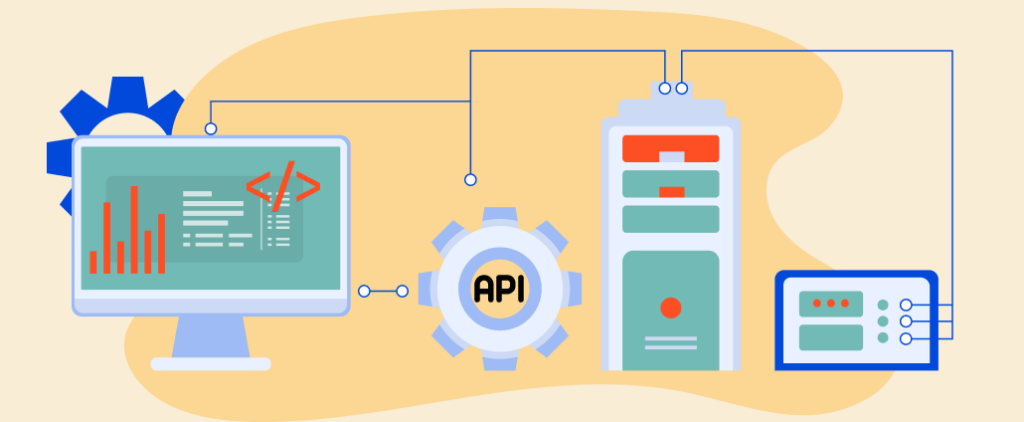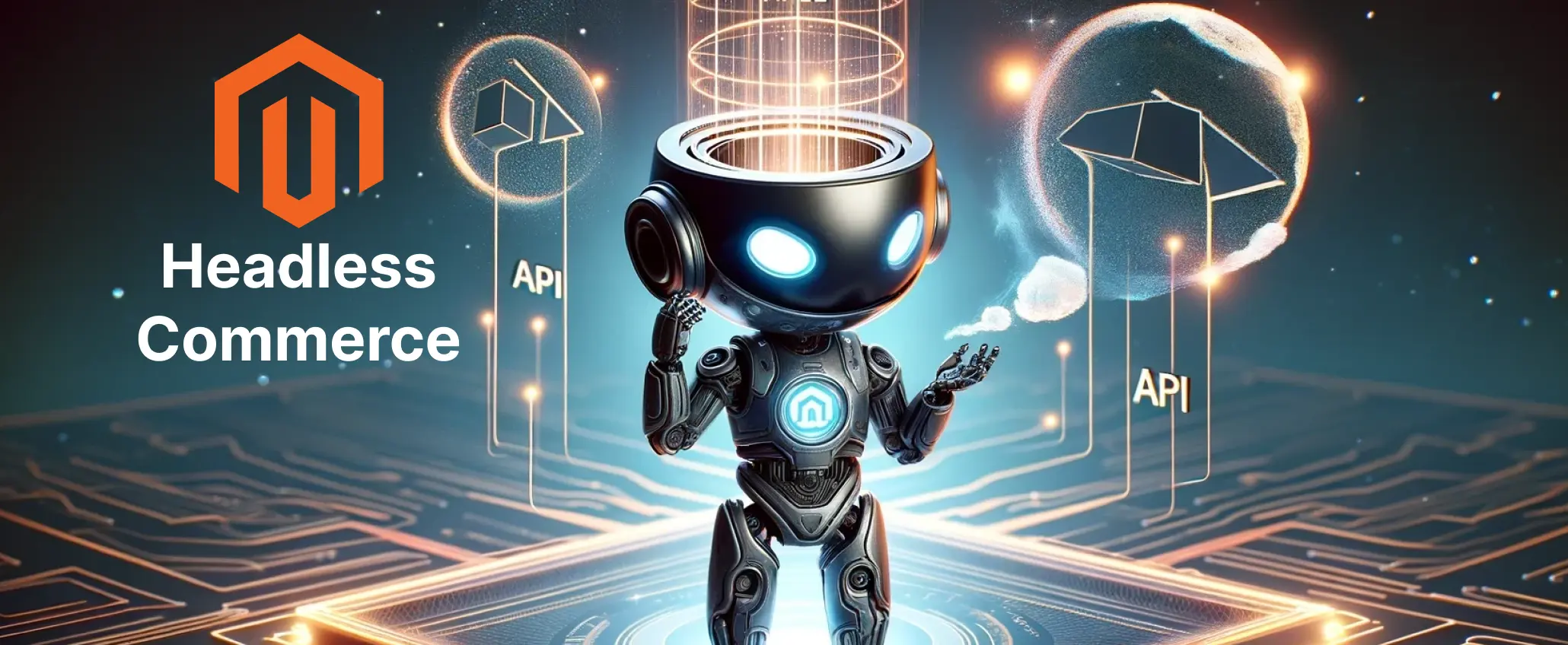Magento Headless Commerce has emerged as a strategic solution. Unlike traditional ecommerce systems where the frontend and backend are tightly coupled. Headless commerce separates the presentation layer from the ecommerce engine.
We will discuss how it supports innovative customer interactions and delve into its benefits for building future-ready online stores with Magento experts guidence.
What is Headless Commerce?

Headless commerce is an architectural approach where the frontend is decoupled from the backend. This separation is achieved using application programming interfaces (APIs). It allow the frontend to communicate with the backend. This model offers a versatile framework that can adapt to various display technologies including web, mobile, and IoT devices.
Magento and Its Headless Commerce Capabilities
Magento’s architecture is well-suited for implementing headless commerce solutions. It provide businesses with the flexibility and scalability needed to deliver exceptional online shopping experiences. In this section, we’ll explore how Magento supports headless commerce and the specific capabilities it offers:
Magento’s API Layer for Headless Commerce

Magento’s API layer is central to enabling headless commerce. It provides a set of APIs that allow developers to interact with Magento’s backend services programmatically. Two primary APIs used for headless commerce in Magento are:
- REST API: Allows developers to perform CRUD (Create, Read, Update, Delete) operations on Magento resources using HTTP requests.
- GraphQL: Provides a more efficient and flexible alternative to REST API for fetching data. GraphQL allows clients to specify exactly which data they need, reducing network overhead and improving performance.
Benefits of Magento Headless Commerce
Implementing headless commerce with Magento offers businesses a wide range of benefits, empowering them to create highly customizable, scalable, and innovative online shopping experiences. Businesses can utilize these functionalties to develop the headless solution by collbrating with Magento development services agency.
Enhanced Customization and Flexibility
One of the primary advantages of headless commerce with Magento is the ability to customize the frontend user experience without constraints imposed by the backend. Businesses can:
- Tailor User Interfaces: Design unique storefronts tailored to specific audiences, devices, or marketing campaigns.
- Implement Cutting-edge Designs: Experiment with the latest frontend technologies, such as Progressive Web Apps (PWAs) or immersive user interfaces, to create engaging and memorable shopping experiences.
- Iterate Quickly: Make rapid changes to the frontend without disrupting backend operations, enabling businesses to respond swiftly to market trends and customer feedback.
Improved Site Performance and User Experience

By decoupling the frontend from the backend, headless commerce with Magento can significantly enhance site performance and user experience:
- Faster Loading Times: Optimize frontend assets and minimize server requests, resulting in faster page load times and improved user engagement.
- Seamless User Journeys: Create frictionless shopping experiences across multiple devices and touchpoints, driving higher conversion rates and customer satisfaction.
- Personalized Content Delivery: Utilize data-driven insights to deliver personalized product recommendations, content, and promotions, increasing relevance and driving repeat purchases. Additionaly, to ensure the seamless expereince it is suggested to hire Magento experts.
Scalability and Ease of Integrations
Magento’s headless architecture enables businesses to scale their ecommerce operations and integrate with other technologies seamlessly:
- Scalability: Handle increased traffic and transaction volumes without compromising performance or user experience, ensuring a consistent and reliable shopping experience during peak periods.
- Flexibility to Integrate: Integrate with a wide range of third-party systems, including ERP, CRM, marketing automation, and analytics platforms, to create a unified ecosystem that supports business growth and efficiency.
- Future-proofing: Position the ecommerce platform for future innovations and emerging technologies, ensuring long-term viability and relevance in a rapidly evolving digital landscape.
Setting Up a Magento Headless Commerce Store

Setting up a Magento headless commerce store requires careful planning and execution to ensure a seamless integration between the frontend and backend components. In this section, we’ll outline the step-by-step process and essential considerations for creating a Magento headless commerce environment:
Step-by-Step Guide:
Define Your Frontend Technology Stack
Choose the frontend technology stack that best aligns with your business goals, budget, and technical requirements. Options include:
Configure Magento for Headless Operation
Prepare your Magento backend for headless operation by enabling and configuring the necessary APIs, including REST and GraphQL. Ensure that your Magento installation is up to date and compatible with the chosen frontend technology stack.
Develop Custom Frontend Components
Work with frontend Magento experts to design and implement custom frontend components that interact with Magento’s APIs to retrieve product data, manage cart and checkout processes, and handle user authentication. Ensure that the frontend components are optimized for performance, accessibility, and responsiveness across different devices and screen sizes.
Implement Security Measures
Implement robust security measures to protect sensitive customer data and prevent unauthorized access to your Magento backend and frontend components. Utilize encryption, authentication, and authorization mechanisms to secure API endpoints and user sessions.
Optimize for SEO and Performance
Optimize your Magento headless commerce store for search engine visibility and performance. Ensure that your frontend components generate SEO-friendly HTML markup and implement best practices for page load speed, including lazy loading of assets, image optimization, and content caching.
Enable Multi-Channel Selling
Leverage Magento’s headless architecture to enable multi-channel selling across various touchpoints, including web, mobile, social media, and offline stores. Integrate with third-party platforms and marketplaces to reach a broader audience and drive sales growth.
Single Page Applications (SPAs)
Create dynamic and interactive user interfaces using JavaScript frameworks like React, Vue.js, or Angular.
Moreover, setting up the Magento store is very technical task it requires to collaborate with Magento development services agency for smooth expereince.
Challenges and Considerations

While headless commerce with Magento offers numerous benefits, it also presents unique challenges and considerations that businesses need to address to ensure a successful implementation. In this section, we’ll discuss some common challenges and provide strategic solutions to overcome them:
Integration Complexity
Integrating frontend and backend systems in a headless architecture can be complex, especially when dealing with disparate technologies and data sources.
Maintenance Overhead
Decoupling the frontend from the backend may increase the maintenance overhead, requires to hire Magento experts to manage and update both components effectively.
Performance Optimization
Ensuring optimal performance across the frontend and backend components, including fast page load times, efficient data retrieval, and seamless user interactions, can be challenging.
Security Risks
Exposing APIs for frontend interactions introduces security risks, such as unauthorized access, data breaches, and API abuse, which must be mitigated through robust security measures.
Conclusion
Magento remains at the forefront of headless commerce innovation, with upcoming features and updates that will further enhance its capabilities and support the evolving needs of businesses. It’s essential to partner with experienced professionals, such as Magento development services agency, who can provide guidance, expertise, and support throughout the implementation process.
Stay Tuned for Latest Updates
Fill out the form to subscribe to our newsletter





